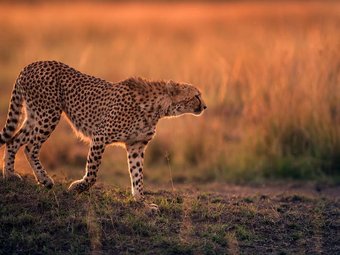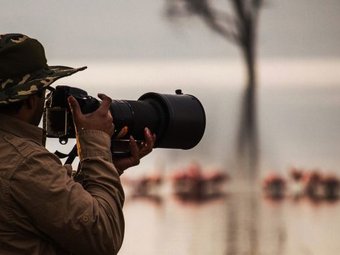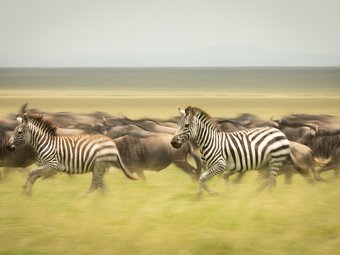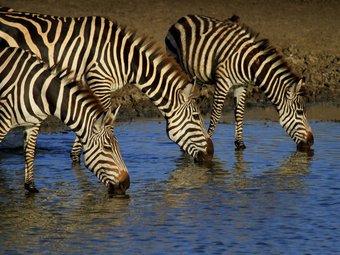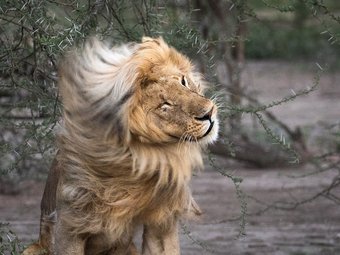BIRD WATCHING SAFARIS
11 days—Birding Watching and Wildlife Safaris
$4970-5840 USD
pp
Safari summary
Birds and wildebeest Migration tour explores the famous and quintessential birding and wildlife reserves of northern Tanzania, Tarangire, Lake Manyara, the Serengeti and Ngorongoro Crater. The tour will focus on Tanzanian endemics and regional specials whilst having ample time to marvel at some of the highest concentrations of wildlife to be found anywhere on our planet, and all this amidst spectacular scenery in one of Africa's wildest, most stable and least spoilt destinations! Some of the many regional specials and endemic birds that will target on this tour are the beautiful Fischer’s and Yellow-collared Lovebirds, Ashy Starling, Grey-breasted Spurfowl and Rufous-tailed Weaver.
About this tour
| Tour type | Custom, tailor-made, private | |
| Main focus | Game drives | |
| Activity level | Easy activity | |
| Best months | June, July, August, September, October, November | |
| Countries | ||
| Parks |
Fine details
Safari highlights
- Bird watching—with professional guide
- Photography safari—with professional guide
- Wildlife sanctuaries
What’s included?
- Accommodation
- Airport transfers
- Meals
- Park fees
- Premium alcoholic beverages
- Private vehicle and driver
What’s not included?
- Hot air balloons
- Internal flights
- International flights
- Spa treatments
- Tips and gratuities
- Visas
Itinerary
Arrival in Kilimanjaro Airport
Today is set aside as an arrival day in order for us to make an early start the following morning. Upon arrival at Kilimanjaro International Airport, near the town of Arusha, you will be met and transferred to our accommodation for the night. You will have the opportunity to meet your tour guide for dinner and discuss our forthcoming adventures.
River Trees Country In Lodge
Lark Plains.
The first full day visit to the Oldonyo Sambu area, to the north of Arusha. The site we explore here is known as Angyata Osugat or ‘Lark Plains’, and rightly so, as it is possible to record up to eight species of lark at this site including the erratic Athi Short-toed, Pink-breasted, the nomadic Shorttailed and the rare, endemic Beesley’s (a recent split from Spike-heeled Lark). Situated in the rainshadow of Mt. Meru.
Rivertrees Country Inn
Arusha National Park.
Arusha
We will spend the day exploring the mosaic of forest and grassland habitats in search of the park specials which could include Scaly Francolin, Silvery-cheeked Hornbill, Narina Trogon, White-starred Robin, White-eared Barbet, Stripe-faced and Grey-olive Greenbuls, Red-throated Twinspot, Black-throated Wattle-eye, African Emerald Cuckoo, Red-winged and Violet-backed Starlings, Retz’s Helmetshrike, Pallid Honeyguide, Blackheaded Oriole, Broad-ringed White-eye, Red-backed Mannikin.
Rivertrees Country Inn
Arusha to Tarangire National Park
Tarangire
We will take our time to observe these massive pachyderms and will surely be amazed at their tender family interactions. Other mammals likely to be seen include Impala, Kirk’s Dik-dik, comical Common Warthog and Giraffe. Night birding around our lodge can also be fruitful, and we will look for Slender-tailed and Freckled Nightjars as well as the diminutive African Scops Owl.
Lake Burunge Tented Lodge
Tarangire to Lake Manyara Park
Lake Manyara
This diversity results in an impressive number of bird species (almost 400), in a relatively small national park. The fig forest at the entrance gate holds some good forest species and should produce Purple-crested Turaco, Silvery-cheeked Hornbill, Crowned Eagle, Baglafecht Weaver, Grey-olive Greenbul and Crested Guineafowl. The Acacia woodlands are especially good for birds. Apart from the ubiquitous Superb Starlings and Lilac-breasted Rollers,
Ngorongoro Farm House
Lake Manyara to Serengeti
Serengeti
This morning we make our way to the world-famous Serengeti. En route we pass through an area which is home to the Maasai people. These tall, proud nomadic warriors are famous for their legendary prowess in battle and singlehanded acts of bravery in fights with wild animals. Here, we have the opportunity for an optional (noninclusive) excursion to a traditional Maasai village.Time dependent, we may stop at the famous Oldupai Gorge, so named after the wild Sisal plant that grows in the gorge.
Kubu Kubu Tented Lodge
Serengeti National Park.
Serengeti
Serengeti is one of the world’s largest natural sanctuaries. Despite the vast space, the numbers of game that we can expect to see is still astounding. The Serengeti, literally meaning ‘Endless Plain’ in Maasai, consists mostly of grasslands interspersed with Acacia woodlands and rocky outcrops. There is little permanent water in the park and this fact, combined with a fairly regular rainfall pattern, has resulted in the world-famous Wildebeest migration,
Kubu Kubu Tented Lodge
Big Game of the Serengeti
Serengeti
During our visit to the Serengeti we will explore the southern and central areas. Once again, we have the chance of finding the full complement of African mega fauna. We hope to see lazing prides of Lions, a Leopard draped over a large tree, an aloof Cheetah resting on or near a vantage point, skulking Spotted Hyaenas, jackals and, if we are fortunate, the bizarre Bat-eared Fox. Several species of smaller cats such as Caracal, Serval or African Wild Cat may also be seen.
Kubu Kubu Tented Lodge
Serengeti to Ngorongoro ridge.
Ngorongoro Crater
After breakfast we make our way out of the Sergenti towards Ngorongoro. The crater is also home of populations of large mammals. The fantastic forests that cloak the rim of this iconic site are home to a feast of Afro-montane forest birds. Hildebrandt’s Francolin, Schalow’s Turaco, the elusive Brown-backed Woodpecker, Golden-winged and Eastern Double-collared Sunbirds can be found. We will bird the surrounds of our lodge, and enjoy the vistas of the Ngorongoro Crater from dedicated viewpoints.
Ngorongoro Sopa Lodge
Ngorongoro Crater
After an early breakfast, we will descend 600m (1,970ft) to the Ngorongoro Crater floor itself. The crater reputably boasts the world’s highest concentration of predators, and these include Lion, Cheetah, Leopard, Serval, Bat-eared Fox, Spotted Hyena, African Golden Wolf (Golden Jackal) and Black-backed Jackal. The birding is equally rewarding and we can expect to find many of the picture-book species which make Africa so famous. Pink rafts of Greater and Lesser Flamingos on Lake Magadi.
Ngorongoro Farm House
Back to Arusha for final departure
This morning we will bird the Ngorongoro highlands for several target species, including Grey-capped Warbler, White-tailed Blue Flycatcher and Southern Citril. Other birds recorded here include Black-fronted Bushshrike, Grey-headed Nigrita and both Spectacled and Thick-billed Weavers. We will take lunch at the fabulous Gibb’s Farm, a colonial-era mansion replete with rambling gardens and misty montane forest. After lunch, we will make our way back to Kilimanjaro International Airport.
Here are the latest tours by Expect In Africa Safaris.
EXPLORER THE NORTH TANZANIA
Tour by: Expect In Africa Safaris
Countries:

Focus: Game drives
WILDLIFE PHOTOGRAPHY SAFARI
Tour by: Expect In Africa Safaris
Countries:

Focus: Game drives
BEST OF NORTHERN TANZANIA
Tour by: Expect In Africa Safaris
Countries:

Focus: Game drives
TANZANIA FAMILY SAFARI
Tour by: Expect In Africa Safaris
Countries:

Focus: Game drives
BIG FIVE AND MIGRATION SAFARI
Tour by: Expect In Africa Safaris
Countries:

Focus: Game drives
Cleanliness of vehicle
Meet and greet team
Quality of itinerary
Responsiveness of staff
